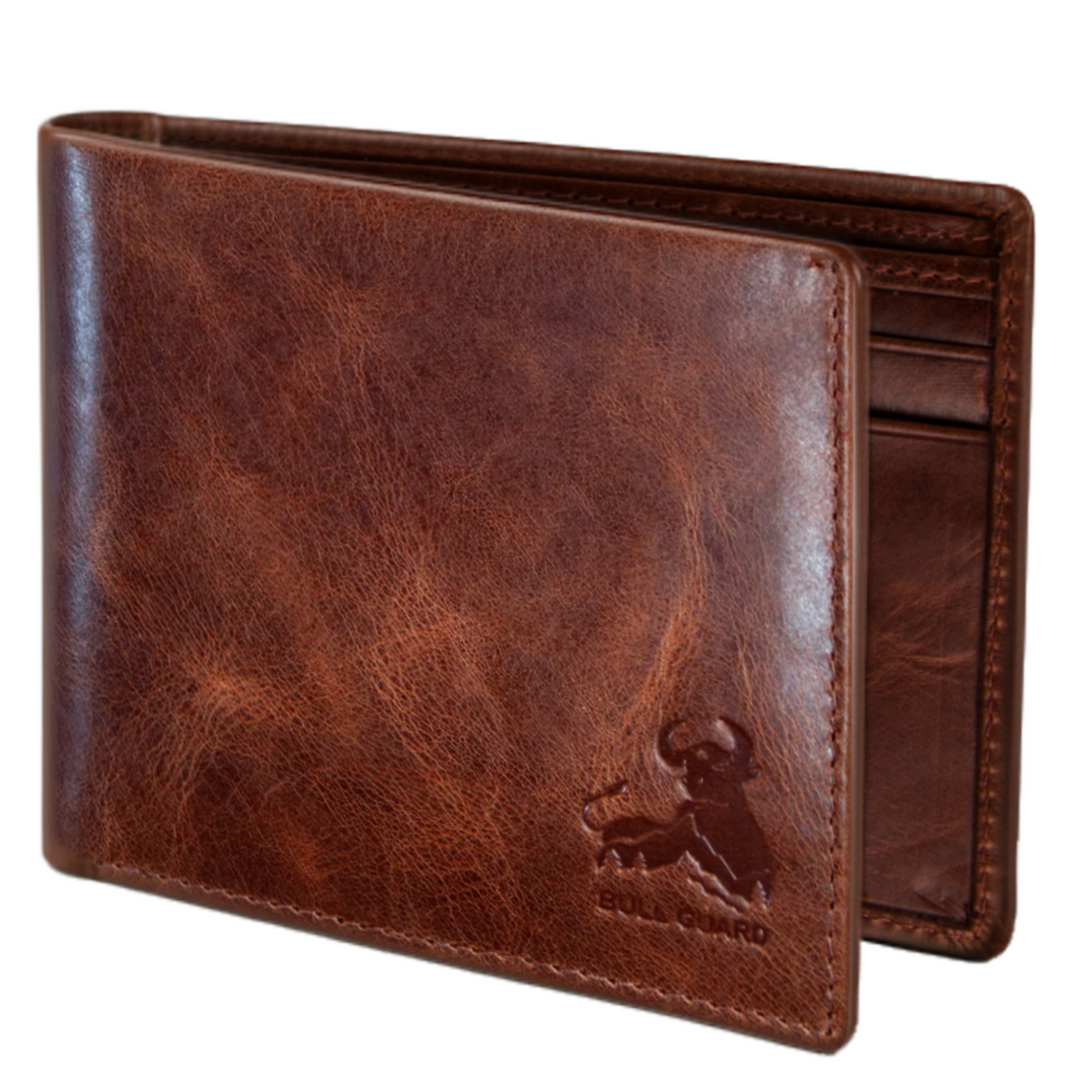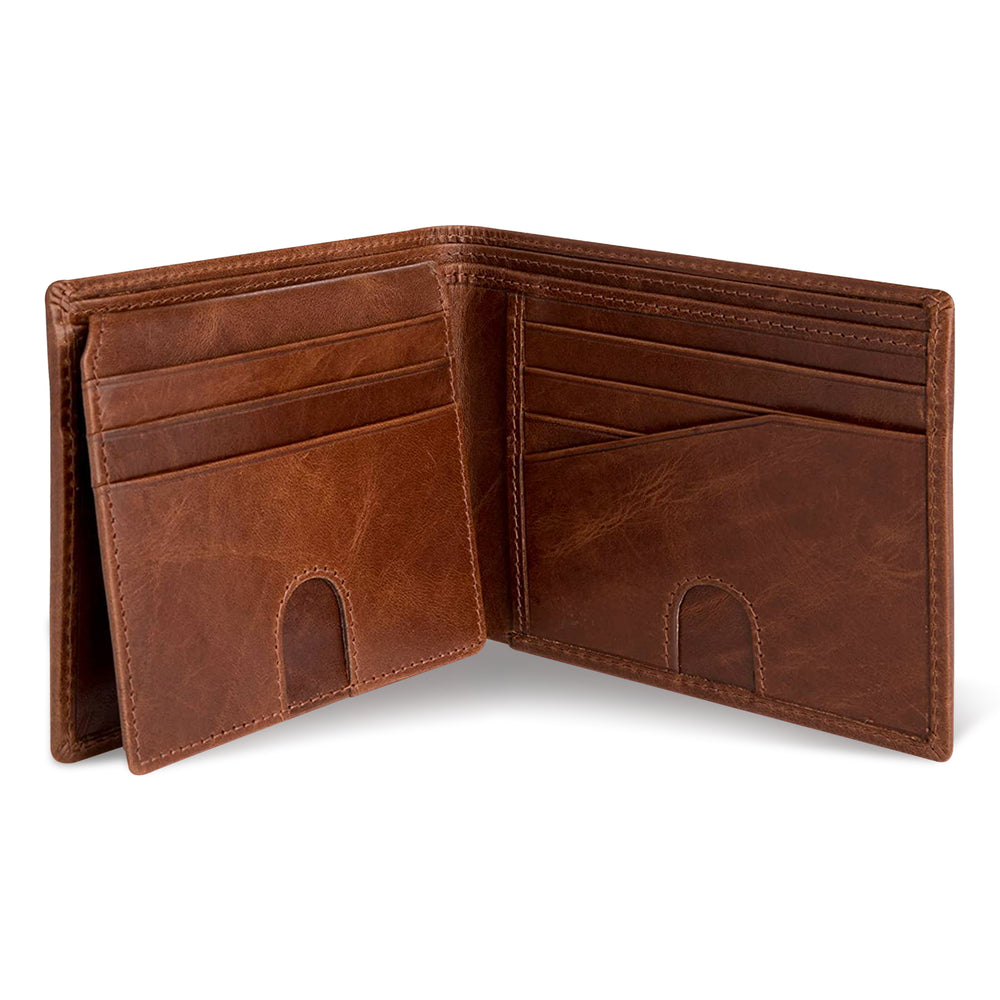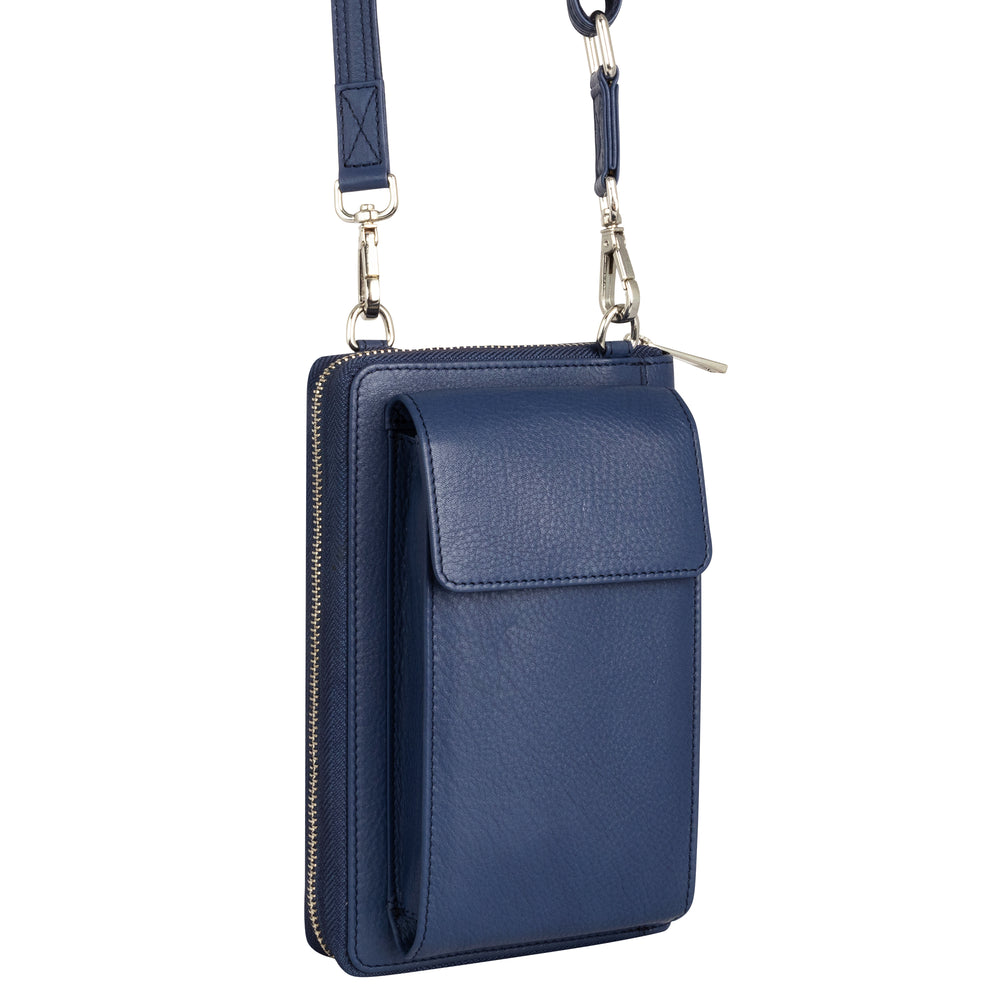Key Takeaways
- Cognac leather is premium leather dyed in rich amber-brown tones with golden and red undertones.
- The color of cognac leather is inspired by the warm hue of French brandy.
- Cognac leather is versatile and develops a unique patina over time.
- Each cognac leather piece becomes a living companion that tells your story through wear.
Table of Contents
- Cognac Leather Defined: Origins, Meaning, and First Impressions
- Unique Characteristics of Cognac Leather: Color, Feel, and Evolution
- Cognac Leather Types: What's Under the Name?
- Common Uses: Cognac Leather at Home and in the World
- Common (& Uncommon) Uses: Cognac Leather at Home and in the World
- How to Identify Genuine Cognac Leather: Quick Checks & Tests
- Cognac Leather vs. Other Popular Colors: Why Warmth Wins
- Choosing Quality Cognac Leather: What I Wish Every Customer Knew
- Sustainability and Craftsmanship: Why Origin Matters
- Caring for Cognac Leather: Simple Rituals for Lasting Beauty
Cognac Leather – More Than a Color: A Companion for the Bold
Cognac leather is premium leather dyed in rich amber-brown tones with golden and red undertones, inspired by French brandy's warm hue. This versatile color develops a unique patina over time, making each piece a living companion that tells your story through wear.
When I sketched my first Bull Guard wallet in cognac leather, I knew I wasn't just choosing a color, I was selecting a partner for life's adventures. That warm, amber-brown tone with its golden undertones doesn't just complement your style; it evolves with your journey, deepening and softening through city commutes, mountain trails, and countless moments in between.
Every Bull Guard creation in cognac becomes more than an accessory. It's a testament to intentional living, built to patina beautifully while protecting what matters most, your cards, your cash, your peace of mind through proven RFID technology. Bifold Slim with or without Airtag and 2 ID Leather Wallet are two standout examples of how cognac leather elevates both form and function for daily carry.
For those seeking a more compact option, the Slim Leather Wallet in cognac offers minimalist style without sacrificing durability or elegance.
Cognac Leather Defined: Origins, Meaning, and First Impressions
The first time you hold genuine cognac leather, you understand why European craftsmen in the 18th century named it after French brandy. That same warm amber glow, those hints of gold catching light, it's unmistakable. Cognac leather refers specifically to leather dyed in rich brown tones with golden and red undertones, creating depth that shifts subtly under different lighting.
| Leather Color | Undertones | Visual Warmth | Matching Ease |
|---|---|---|---|
| Cognac | Gold, amber, red | High warmth | Versatile with earth tones |
| Chestnut | Red, burgundy | Medium warmth | Best with darker colors |
| Tan | Yellow, beige | Neutral | Summer-friendly |
| Dark Brown | Black, deep red | Low warmth | Formal versatility |
Why do adventurers and style seekers consistently choose cognac? It's the emotional appeal, this color radiates approachability and timeless sophistication. Unlike stark black or basic brown, cognac color leather invites conversation and complements both casual jeans and tailored suits. When you choose cognac, you're embracing heritage over trends, story over flash.
Unique Characteristics of Cognac Leather: Color, Feel, and Evolution

True cognac leather reveals its complexity in natural light, those multidimensional browns dancing with gold and subtle red undertones. The visible natural grain tells stories: each mark and scar becomes a map of authentic life lived. Quality cognac maintains a gentle sheen that responds to your touch, warming under your hands.
The texture feels buttery and supple from day one, but the real magic happens over time. My Bull Guard wallet picked up character from Boston subways and mountain hikes alike. After six months, the edges soften noticeably. By two years, the color deepens to a rich mahogany while developing that coveted patina, the hallmark of genuine leather that improves with age.
- 0-3 months: Original amber tone, slight stiffness
- 6 months: Softer feel, edges begin darkening
- 2+ years: Deep mahogany color, supple texture, unique character marks
If you're interested in how a durable leather wallet for everyday use develops its unique character, cognac leather is the perfect example of beauty that grows with time.
Cognac Leather Types: What's Under the Name?
Is all cognac leather the same? Absolutely not, quality varies dramatically based on hide selection and tanning expertise.
Think of leather quality like restaurants: the "cut" (full-grain, top-grain) matters, but the "chef" (tannery), ingredients, and preparation determine the final result. Two leathers with identical labels can perform completely differently.
Full-grain cognac leather preserves natural markings and offers maximum durability, perfect for Bull Guard wallets that need to withstand daily adventures. Top-grain versions are slightly refined, ideal for sophisticated urban carry. Both outperform "genuine" leather, which simply means real leather but spans enormous quality ranges.
Beware faux "cognac" alternatives. Polyurethane lookalikes lack the warmth, scent, and aging character that make authentic cognac leather irreplaceable. Quality tanneries use vegetable or chrome tanning processes that create lasting color depth, something synthetic materials can never replicate. For more on the differences, see this guide to faux synthetic leather and how it compares to the real thing.
Common Uses: Cognac Leather at Home and in the World
Fashion accessories lead cognac leather applications, wallets, crossbody purses, and belts that complement adventurous lifestyles and urban elegance. Bull Guard customers choose cognac for its versatility: equally at home in boardrooms and on hiking trails. If you're seeking a stylish and practical option, the Crossbody Wallet Purse, XtraRoom is a customer favorite for hands-free convenience and timeless appeal.
Common (& Uncommon) Uses: Cognac Leather at Home and in the World

Cognac leather lives everywhere bold spirits gather. I've watched Bull Guard cognac wallets travel from boardroom presentations to mountain hiking trails, each environment adding its own chapter to the leather's story. The color's versatility makes it equally compelling whether you're gifting a trifold to a graduating son or choosing a crossbody purse for hands-free urban adventures.
Fashion & Accessories: Cognac leather wallets and crossbody purses anchor any wardrobe with warm sophistication. The color complements both casual denim and formal business attire, making it the choice for professionals who refuse to carry different accessories for different occasions. Bull Guard customers particularly love cognac for gifting, it feels both classic and distinctive, never boring. For a traditional gift, consider the Classic Leather Trifold for its blend of heritage and modern function.
Home & Lifestyle: Interior designers reach for cognac leather furniture because it brings instant warmth to any space. Unlike stark black or clinical white, cognac leather sofas and chairs create inviting environments that feel lived-in from day one. The color hides minor scuffs and wear patterns better than lighter tones, making it practical for families with children or pets.
Specialized Applications: Professional photographers use cognac leather as backdrop material, its rich texture and warm undertones enhance product shots. Custom automotive enthusiasts choose cognac for interior details because it suggests both luxury and adventure. Some artisans even craft premium pet accessories in cognac leather, creating pieces that age beautifully alongside their four-legged companions.
The unifying thread across all applications is cognac leather's ability to improve with use. Whether protecting your cards in a city commute or anchoring your living room's design, authentic cognac leather becomes more beautiful as it accumulates the stories of daily life.
How to Identify Genuine Cognac Leather: Quick Checks & Tests
Real cognac leather announces itself before you even touch it. The scent hits first, rich, warm, slightly sweet but never artificial. Synthetic versions smell like plastic or chemicals trying too hard to mimic something they can never become. I tell Bull Guard customers to trust their noses; genuine leather carries the story of its natural origins in its aroma.
Visual Inspection: Examine the grain pattern closely. Authentic cognac leather shows natural variations, subtle wrinkles, small scars, and irregular pore patterns that prove this hide once protected a living animal. Faux leather displays perfect uniformity, like a photograph printed on plastic. Look at cut edges too; genuine leather reveals random fibers, while synthetic materials show solid, uniform layers.
Touch Test: Genuine cognac leather feels warm and supple in your hands, responding to your body temperature. It should have slight give when pressed, then return to its original shape. Synthetic alternatives feel cold, stiff, or artificially soft, they lack the complex texture that comes from natural hide structure.
Water Drop Test: Place a small water drop on an inconspicuous area. Real leather will slowly absorb it, temporarily darkening the spot before drying to its original color. Fake leather either repels water completely or creates a sticky residue that doesn't properly absorb.
The most reliable indicator remains the source. Reputable brands like Bull Guard provide material specifications and tannery information. When someone won't tell you where their leather comes from or how it's processed, that silence speaks volumes about quality and authenticity. For a deeper dive, explore our article on real leather and how to spot the genuine article.
Cognac Leather vs. Other Popular Colors: Why Warmth Wins
When I'm sketching new Bull Guard designs, color choice determines personality. Cognac leather brings something no other shade can, emotional warmth that transforms an accessory into a companion.
| Leather Color | Undertones | Patina Evolution | Stain Camouflage | Style Versatility |
|---|---|---|---|---|
| Cognac | Amber, gold, subtle red | Deepens beautifully over years | Excellent - natural variations hide marks | Casual to business formal |
| Standard Brown | Neutral, sometimes muddy | Minimal visible change | Good - darker base hides wear | Traditional, less contemporary appeal |
| Black | None - pure neutral | Shows scratches more readily | Poor - every mark visible | Formal settings, minimalist aesthetic |
| Tan | Yellow, cream undertones | Can yellow or fade unevenly | Poor - light color shows everything | Summer styles, casual only |
Black leather demands perfection, every scuff screams for attention. Tan looks fresh initially but ages less gracefully, showing wear patterns that feel more like damage than character. Cognac color leather embraces life's adventures, developing rich patina that tells your story rather than betraying your carelessness.
The secret lies in cognac's complex undertones. Where standard brown feels flat, cognac shifts between amber and mahogany depending on lighting. This depth means your Bull Guard wallet looks intentionally sophisticated whether you're closing a deal downtown or exploring weekend markets. For a broader perspective on leather as a material, see this comprehensive overview of leather.
Choosing Quality Cognac Leather: What I Wish Every Customer Knew

After road-testing hundreds of prototypes on Boston streets and mountain trails, I've learned what separates cognac leather that lasts from cognac leather that disappoints.
For Wallets and Small Accessories: Expect subtle grain variations, these signal authenticity, not defects. Machine-perfect surfaces indicate artificial processing that strips away the leather's natural strength. When examining a potential purchase, press gently with your thumb. Quality cognac leather should yield slightly, then spring back without leaving permanent impressions.
For Larger Items: Request a material sample before committing to furniture or bags. Genuine cognac develops character through use, but you want to ensure the base tone matches your vision. I always recommend ordering swatches in different lighting conditions, what looks perfect under store fluorescents might disappoint in natural daylight.
Check return policies carefully. Reputable makers understand that genuine leather needs a break-in period where both color and flexibility evolve. Any seller uncomfortable with reasonable return windows likely knows their product won't improve with time. For more on classic styles, see our guide to the classic trifold leather wallet style.
Sustainability and Craftsmanship: Why Origin Matters
Every Bull Guard piece starts with a conversation, not just about design, but about the hands that will craft it and the impact we leave behind.
Ethical Sourcing Markers: Look for leather that's a by-product of food production rather than purpose-raised hides. Vegetable tanning uses natural bark extracts instead of harsh chromium chemicals, creating leather that biodegrades naturally. The process takes months longer but produces cognac leather with superior aging characteristics and minimal environmental impact.
Craftsmanship Indicators: Hand-stitching creates seams that strengthen over time rather than weakening. Machine stitching pierces leather with perfect uniformity that creates stress concentration points, beautiful initially, but prone to failure where life demands flexibility.
Water-based finishes allow leather to breathe and develop authentic patina. Plastic-based topcoats create that "perfect" appearance that never changes, never improves, never becomes uniquely yours.
When I visit our partner tanneries, I see master craftsmen who learned their trade from fathers and grandfathers. This isn't romantic nostalgia, it's practical expertise that shows in every wallet that emerges from their hands. The difference between industrial and artisanal isn't just philosophical; it's measurable in decades of daily use. For more scientific insight into leather production and its properties, consult this resource on leather chemistry.
Caring for Cognac Leather: Simple Rituals for Lasting Beauty
The best cognac leather improves with minimal intervention. Over-conditioning kills character faster than neglect.
Monthly Maintenance: Apply organic cream conditioner sparingly, pea-sized amount per wallet surface. Buff with soft cloth until absorbed. More isn't better; excess conditioning creates sticky surfaces that attract dirt and lose that coveted natural patina.
Emergency Response: Water spills: Blot immediately, never rub. Allow air drying away from direct heat. The leather may temporarily darken but will return to original tone as moisture evaporates.
Scuffs: Often disappear with gentle finger massage. Body heat and natural oils work better than commercial products for minor marks.
Seasonal Care: Winter's dry air makes leather brittle. A thin coat of beeswax-based protector every six weeks maintains flexibility. Summer humidity requires the opposite, ensure good air circulation to prevent mold in storage.
Frequently Asked Questions
What makes cognac leather different from other leather colors like chestnut or tan?
Cognac leather stands out with its rich amber-brown tones accented by golden and red undertones, inspired by the warm hue of French brandy. Unlike chestnut, which leans more toward red and burgundy shades, or tan with its lighter, neutral warmth, cognac offers a deeper, more vibrant warmth that shifts subtly in different lighting, making it versatile and visually dynamic.
How does cognac leather develop its unique patina over time?
Cognac leather evolves naturally through daily use, softening and deepening in color as it absorbs light, oils, and the stories of your life. This living companion gains character and a personalized patina that reflects your adventures, making each piece uniquely yours while maintaining its rich warmth and supple feel.
What are the best ways to care for and maintain the beauty of cognac leather?
To preserve cognac leather’s beauty, keep it clean with a soft, dry cloth and condition it occasionally with a quality leather conditioner to maintain suppleness. Avoid prolonged exposure to direct sunlight or moisture, and allow the leather to breathe naturally, these simple rituals help your leather companion age gracefully and develop its signature patina.
How can I identify genuine cognac leather when shopping for leather goods?
Genuine cognac leather reveals itself through its warm amber-brown color with golden and red undertones and a rich, natural texture you can feel. Look for craftsmanship details like durable stitching and a supple yet sturdy hand-feel, and remember that quality depends on the entire tanning process, not just the leather cut, trust your senses and the maker’s story to guide you.










